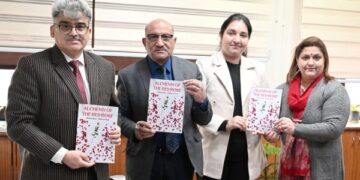Leh: The Ladakh-based Fire and Fury Corps of the Army, raised in the aftermath of the 1999 Kargil War, celebrated its 26th Raising Day on Monday, a defence spokesperson said.
Marking the occasion, General Officer Commanding Lt Gen Hitesh Bhalla laid a wreath at the Hall of Fame War Memorial here on behalf of all ranks to honour soldiers who made the supreme sacrifice during military operations in Ladakh, he said.
As part of the celebrations, members of the Ladakh women’s ice hockey team were invited and honoured by the corps that plays a critical role in the strategic security and development of the Ladakh region, the spokesperson said.
The GOC also felicitated 24 Army personnel for their outstanding performance.
All ranks once again took an oath to defend our borders and reaffirmed their wholehearted commitment to the development of Ladakh, the spokesperson said.
In the aftermath of ‘Operation Vijay’, it was decided to raise a new Corps to look after the entire Ladakh Region. Accordingly, Fire and Fury Corps was raised at Leh on September 1, 1999, the official said.
Stationed at one of the most challenging terrains in the world, the Corps is responsible not only for the defence of India’s Northern and Western Borders, but also for contributing to the overall development and upliftment of the region.
The Corps is guarding strategically important locations like Zojila-Kargil, Siachen Glacier, DBO and Demchok. It ensures that the territorial integrity of our nation is protected with courage and dedication, the spokesperson said.
Over the years, Fire and Fury Corps has initiated several development activities that have contributed to the social, economic and infrastructural progress of Ladakh, he said.
It is a major contributor to the Vibrant Village Programme under which basic necessities and livelihood opportunities are ensured in 43 border villages to encourage reverse migration.
The spokesman said 618 Operation Sadbhavana projects were executed by the Army in the last two years for bridging the gap between development activities of the UT administration and aspirations of the people living in the remote areas.




